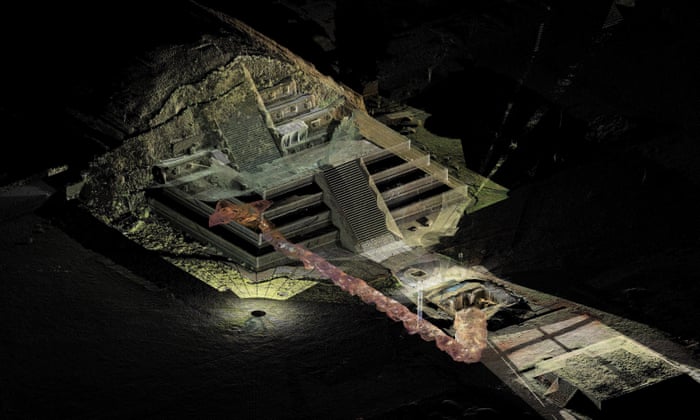Teotihuacan: The City Of The Gods
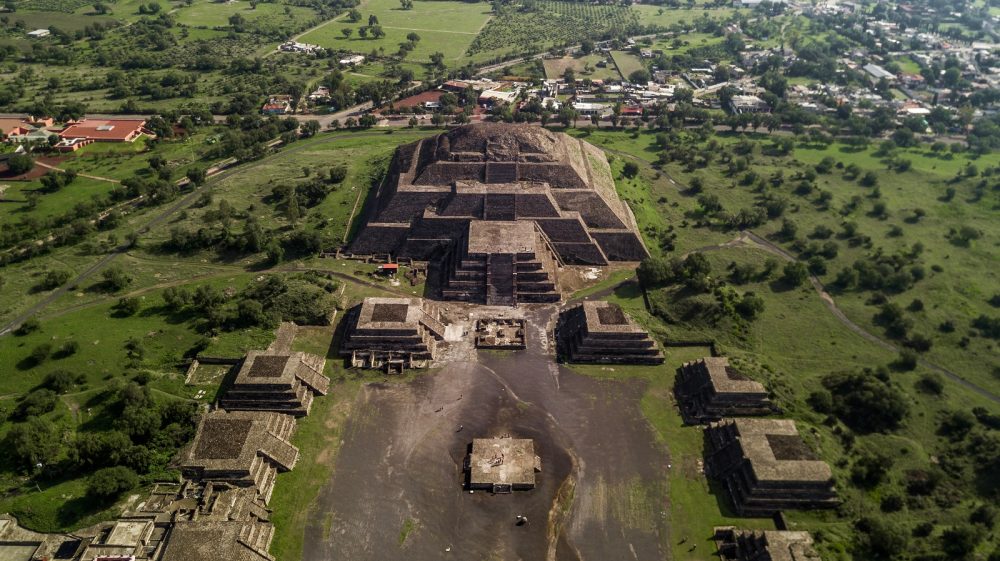
Teotihuacan was a pre-Columbian city of Mesoamerica located in the valley of Mexico about 40 kilometers from present-day Mexico City.
Today it is one of the major Mesoamerican archaeological sites, known for its impressive pyramids and fine architecture.
In addition to the aforementioned pyramids, Teotihuacan also appears important for its anthropological significance due to its multi-family residential complexes, the “Avenue of the Dead” and the small part of its exceptionally well-preserved lively murals.
It is the most important and largest pre-Columbian city in Mexico.
Its name has been translated as “birthplace of the gods”, or “place where gods were born”, but Nahuatl scholar Thelma D. Sullivan interprets the name as “place of those who have the road of the gods.”
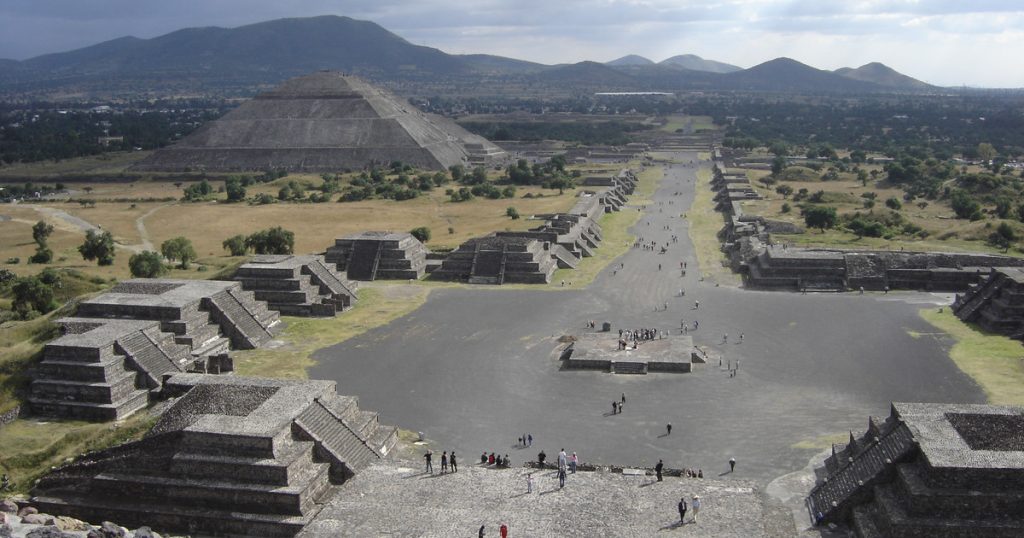
The later Aztecs saw these magnificent ruins and claimed a common ancestry with the Teotihuacanos, modifying and adopting aspects of their culture. The ethnicity of the inhabitants of Teotihuacan is the subject of debate, with scholars suggesting that Teotihuacan was a multi-ethnic state.
The early years of Teotihuacan’s history are shrouded in mystery, and the origin of its founders is still a matter of debate.
For many years, archaeologists believed it was built by the Toltec people, one of the oldest Mexican civilizations.
This theory was based on the discovery of some writings of Aztec origin which attributed the origin of the site to the Toltecs.
However, the term Nahuatl Toltec means great master craftsman and may not always have been used only to refer to the Toltec civilization. Furthermore, Teotihuacan dates back to an era prior to that of the Toltec civilization, thus excluding it from the list of possible funders.
The most important buildings are the Pyramid Of The Sun, the Pyramid Of The Moon, and the Temple Of The Feathered Serpent, named after one of the main gods of this civilization, Quetzalcoatl, known as “The Feathered Serpent”.
the pyramid of the sun
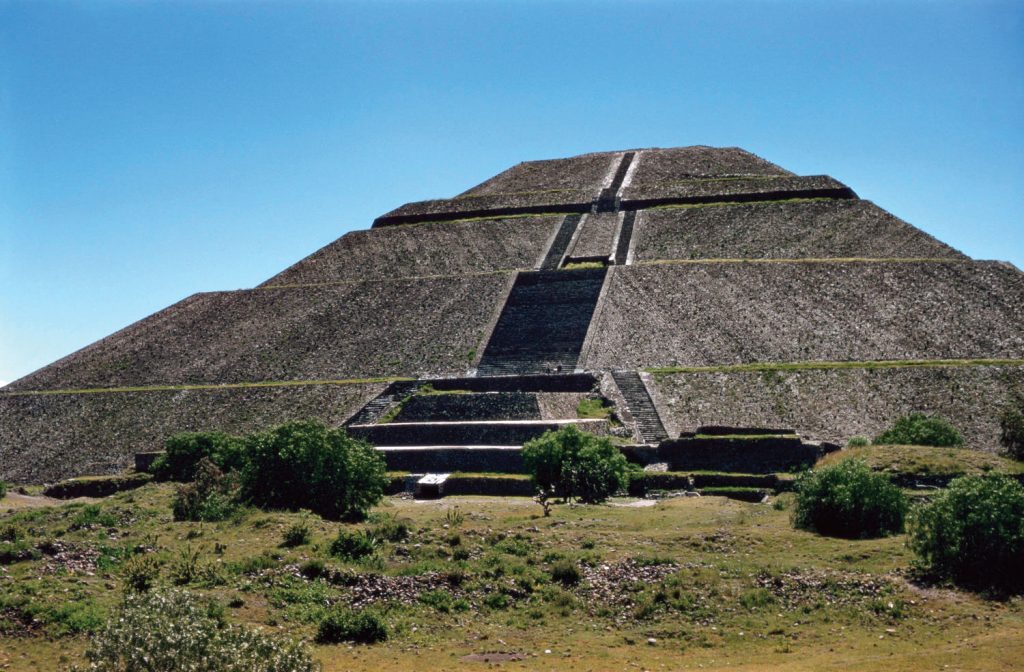
The Pyramid of the Sun is the largest building in Teotihuacan and the second largest in Mesoamerica.
The name Pyramid of the Sun comes from the Aztecs, who visited the city of Teotihuacan centuries after it was abandoned; the name given to the pyramid by the Teotihuacanos is unknown.
At the size of 225 meters (738 feet) across and 75 meters (246 feet) high, it’s the third-largest pyramid in the world.
Over the structure, the ancient Teotihuacanos finished their pyramid with lime plaster imported from surrounding areas, on which they painted brilliantly colored murals.
While the pyramid has endured for centuries, the paint and plaster have not and are no longer visible.
Jaguar heads and paws, stars, and snake rattles are among the few images associated with the pyramids.
It is thought that the pyramid venerated a deity within Teotihuacan society.
However, little evidence exists to support this hypothesis.
The destruction of the temple on top of the pyramid, by both deliberate and natural forces prior to the archaeological study of the site, has so far prevented identification of the pyramid with any particular deity.
The pyramid is also astronomically oriented and was built on a carefully selected spot, from where it was possible to align it in perpendicular directions, to sunrises and sunsets on specific days.
the pyramid of the moon
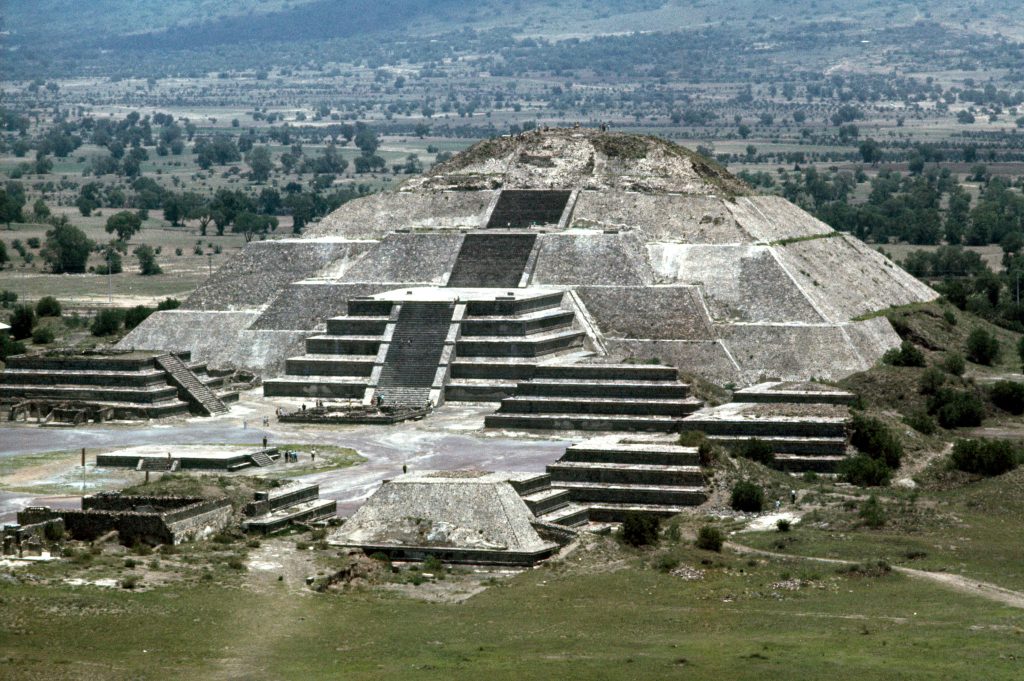
The Pyramid of the Moon is the second-largest pyramid at the Teotihuacan site.
It has 7 layers of buildings built on top of each other. It is 43 meters tall. Its base is 147 meters in the West to East direction by about 130 meters in the North to South direction.
The relation between the mountain, pyramid, and road has been theorized to resemble a connection between the road and the watery underworld, whereas the mountain serves as a sort of anchor to the earth
Beginning in 1998, archaeologists excavated beneath the Pyramid of the Moon. Tunnels dug into the structure have revealed that the pyramid underwent at least six renovations; each new addition was larger and covered the previous structure.
Temple of the feathered serpent
The Temple of the Feathered Serpent is located at the southern end of the Avenue of the Dead, Teotihuacan’s main thoroughfare.
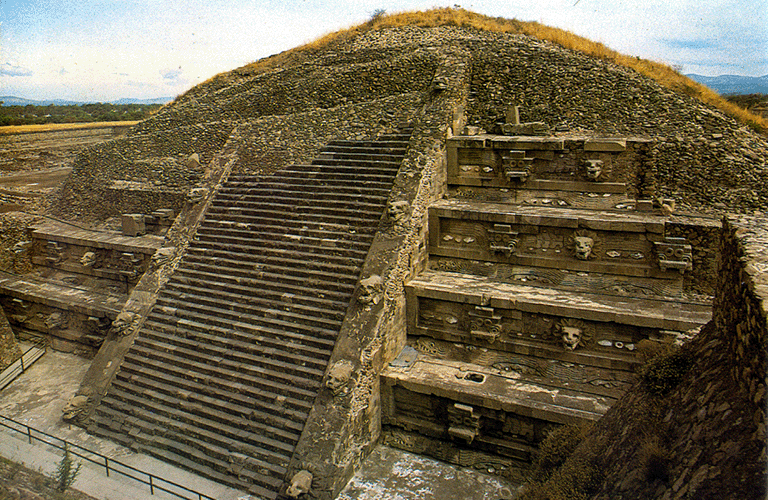
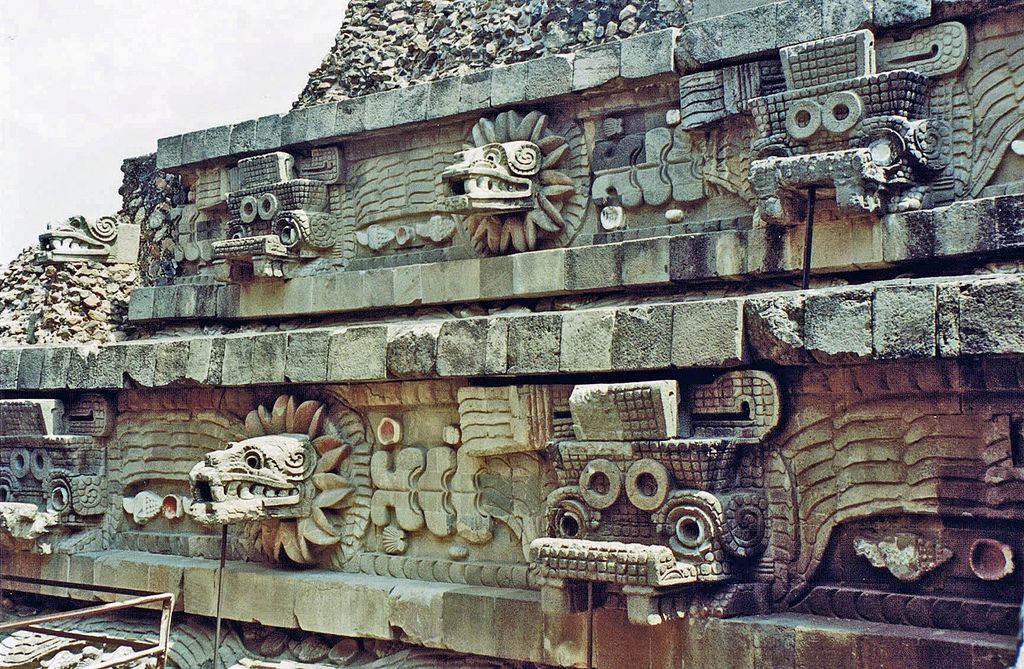
The Feathered Serpent Pyramid is a six-level step pyramid. The outside edges of each level are decorated with feathered serpent heads alternating with those of another snake-like creature, often identified as Tlaloc.
In the eyes of these figures, there is a spot for obsidian glass to be put in, so when the light hits, its eyes would glimmer. In antiquity the entire pyramid was painted – the background here was blue with carved seashells providing decoration.
Under each row of heads are bas-reliefs of the full feathered serpent, in profile, also associated with water symbols.
These and other designs and architectural elements are more than merely decorative, suggesting “strong ideological significance”, although there is no consensus just what that significance is.
Some interpret the pyramid’s iconography as cosmological in scope – a myth of the origin of time or of creation – or as calendrical in nature.
In late 2003 a tunnel beneath the Temple of the Feathered Serpent was accidentally discovered by Sergio Gómez Chávez and Julie Gazzola archaeologists of the National Institute of Anthropology and History (INAH).
After days of a heavy rainstorm, Gómez Chávez noticed that a nearly three-foot-wide sinkhole occurred near the foot of the temple pyramid.
First trying to examine the hole with a flashlight from above Gómez could see only darkness, so tied with a line of heavy rope around his waist he was lowered by several colleagues, and descending into the murk he realized it was a perfectly cylindrical shaft.
At the bottom he came to rest in apparently ancient construction – a man-made tunnel, blocked in both directions by immense stones.
Preliminary planning of the exploration and fundraising took more than six years.
In 2009, the government granted Gómez permission to dig.
By the end of 2009 archaeologists of the INAH located the entrance to the tunnel that leads to galleries under the pyramid, where the remains of rulers of the ancient city might have been deposited.
In August 2010 Gómez Chávez, director of Tlalocan Project: Underground Road announced the advancement of investigations conducted by INAH in the tunnel closed nearly 1,800 years ago by Teotihuacan dwellers.
Excavating was done manually, with spades. Nearly 1,000 tons of soil and debris were removed from the tunnel. There were large spiral seashells, cat bones, pottery, fragments of human skin.
The rich array of objects unearthed included: wooden masks covered with inlaid rock jade and quartz, elaborate necklaces, rings, greenstone crocodile teeth and human figurines, crystals shaped into eyes, beetle wings arranged in a box, sculptures of jaguars, and hundreds of metalized spheres.
The mysterious globes lay in both the north and south chambers.
Ranging from 40 to 130 millimeters, the balls have a core of clay and are covered with a yellow jarosite formed by the oxidation of pyrite.
According to George Cowgill from Arizona State University, the spheres are a fascinating find, and he declared: “Pyrite was certainly used by the Teotihuacanos and other ancient Mesoamerican societies. Originally the spheres would have shone brilliantly. They are indeed unique, but I have no idea what they mean.”
All these artifacts were deposited deliberately and pointedly, as if in offering to appease the gods.
One of the most remarkable findings in the tunnel chambers was a miniature mountainous landscape, 17 meters underground, with tiny pools of liquid mercury representing lakes.
The walls and ceiling of the tunnel were found to have been carefully impregnated with mineral powder composed of magnetite, pyrite (also known as fool’s gold), and hematite, providing a special brightness to the place and to give the effect of standing under the stars as a peculiar re-creation of the underworld.
At the end of the passage, Gómez Chávez’s team uncovered four greenstone statues, wearing garments and beads, and their open eyes would have shone with precious minerals.
Two of the figurines were still in their original positions, leaning back and apparently contemplating up at the axis where the three planes of the universe meet – probably the founding shamans of Teotihuacan, guiding pilgrims to the sanctuary, and carrying bundles of sacred objects used to perform rituals, including pendants and pyrite mirrors, which were perceived as portals to other realms.
